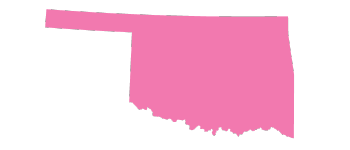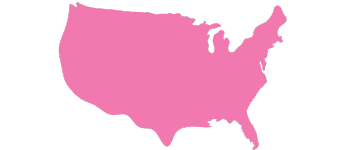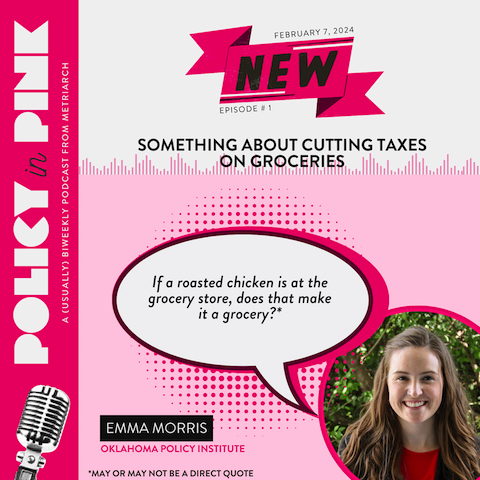Data highlight
Oklahoma ranks 43 (of 51) in women below the poverty line. The best performing state is New Hampshire, with 7.7 percent, and the worst performing state is Louisiana with 21.0% percent of its women living under the poverty line.
HOW WE STACK UP
Percentage of women ages 18-44 who live below the poverty level. ($13,171 for one person) for the year 2021.


Source: Kaiser Family Foundation
YOU MIGHT ALSO LIKE
Definition
The U.S. Census Bureau’s poverty threshold for a family with two adults and one child was $21,811 in 2021 [2]. HHS issues poverty guidelines in late January of each year. Some programs make them effective on the date of publication, others at a later date. Therefore, the 2021 poverty guidelines are approximately equal to the poverty thresholds for 2020 (for most family sizes) [3].
Among those who were in the labor force for 27 weeks or more in 2020, the number of women classified as working poor (3.4 million) was higher than that of men (3.0 million). The working-poor rate also continued to be higher for women (4.6 percent) than for men (3.6 percent).
In 2018, Status of Women in the States gave Oklahoma a D- for women living in poverty. In 2018, 28.5% of women employed in Oklahoma worked in low-wage jobs. In 2019 [4], the National Women’s Law Center found that women are 11 percent more likely to live in poverty nationwide. Women also are more likely to live in extreme poverty than men.
While the federal poverty line (FPL) is an important measure of economic insecurity and is used to determine eligibility for many public assistance programs, it is narrow and outdated. It takes into account the cost of food as a proportion of families’ expenses. Still, it leaves out geographical differences and other essential costs of living, such housing, transportation, child care, and medical costs [5]. One study found that more than 50 million households struggle to pay for basic necessities such as food, housing, and health care. However, only 16 million are officially classified as “in poverty.” [6]
Why we care:
Poverty is associated with poor health outcomes. It influences environmental exposures and health-related behaviors, and is linked to an increased risk of mortality and chronic disease. 16.9 percent of women in Oklahoma live below the poverty level compared to just 14.3 percent of men.
Nationally, women are 35% more likely to live in poverty than men. In 2021, 35% of families living in poverty were female-headed households with children younger than 18.
The poverty rate is higher among American Indian/Alaska Native women ages 18-44 than women of all other racial and ethnic groups. Black women have the second highest rate, followed by women who identify their race as other. Asian women have the lowest poverty rate, followed by white women.
Women living below the federal poverty level often struggle to meet basic needs such as food, health insurance and stable housing. The negative implications of women living in poverty include: reduced access to healthcare coverage, higher rates of chronic illness and death, decreased access to healthy food and increased risk of sexual exploitation and trafficking.
Considerations
Women were already struggling to make ends meet before the pandemic. In 2019, nearly one in nine women – or 13.9 million – and more than one in seven children – nearly 10.5 million – lived in poverty. During the pandemic, job losses in every sector impacting women, and especially women of color, have pushed even more women closer than ever to experiencing poverty.
The American Community Survey did not release the 1-year estimates for 2020 due to significant disruptions to data collection brought on by the coronavirus pandemic. Despite the absence of 2020 data, there is an indication that women have not fully reentered the workforce, likely due in part to the financial burden of childcare.
What we can do:
- Raise Oklahoma’s minimum wage
- Support and promote paid family leave
- Increase access to affordable and safe childcare
- Increase access to safe and affordable housing
This issue brief was written by Metriarch staff as part of our Data Lookbook. Contributions and peer review were provided by Emma Morris with Oklahoma Policy Institute.
Suggested citation
Metriarch. “Economic Factors,” Data Lookbook (2024). URL: metriarchok.org/women-experiencing-poverty.
- Last updated January 21, 2024
Share this page:





